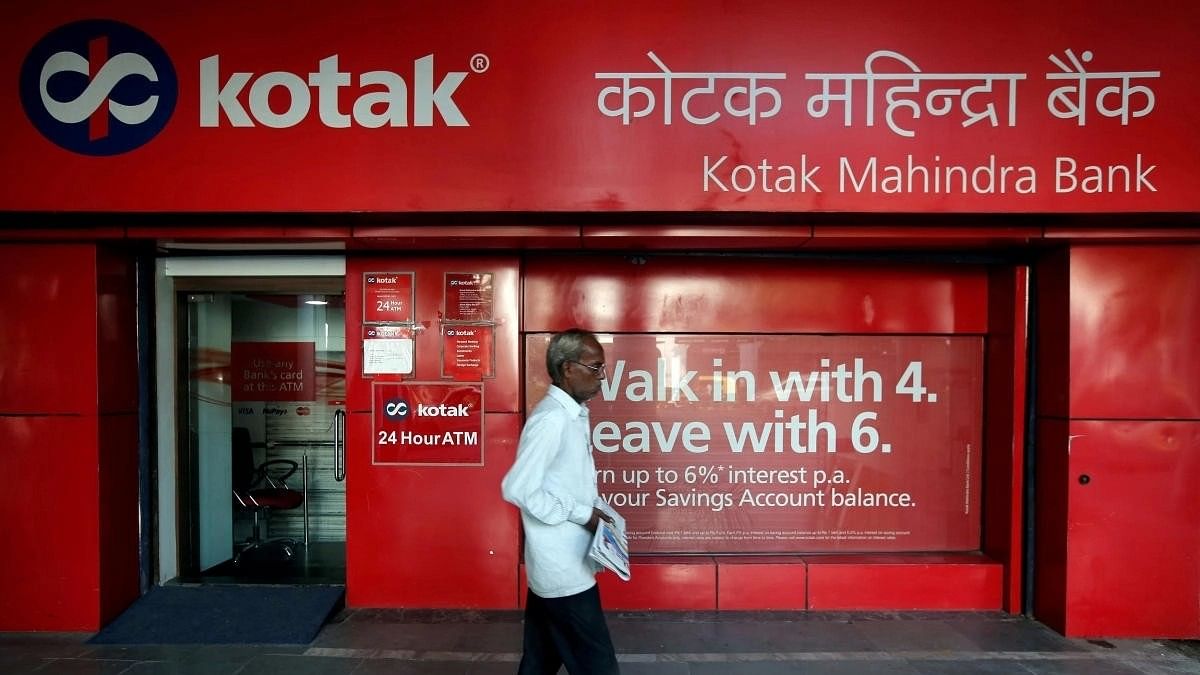
A man walks past a branch of the Kotak Mahindra Bank.
Credit: Reuters Photo
By Preeti Singh and Ruchi Bhatia
Prime Minister Narendra Modi wants to export India’s digital payments system to the world. That plan now risks stumbling as clunky technology used by Indian lenders fails to keep up with his ambitions.
In recent years, the fastest-growing major economy has invested in a vast ecosystem of technologies to increase financial inclusion and pull hundreds of millions of Indians into the digital marketplace. Today, the nation’s homegrown payments system, United Payments Interface, or UPI, is used to pay for practically everything, from expensive jewellery to a 10-rupee cup of piping hot tea.
Yet Indian lenders are still saddled with old technologies, burdening banks as they expand their digital offerings and handle a greater number of deposits. India’s government hasn’t minced words about its concerns. Finance Minister Nirmala Sitharaman has urged financial institutions to modernise and ensure that the domestic financial system “remains uncompromised.” Last December, officials asked state-owned banks to shore up cybersecurity and strictly enforce the know-your-customer process when onboarding new businesses.
Lately, regulatory ire has focused on Kotak Mahindra Bank Ltd., one of India’s largest private lenders. Earlier this month, system glitches disrupted cash withdrawals and digital transactions, prompting the Reserve Bank of India to bar Kotak from adding new customers through its digital channels and from issuing fresh credit cards.
On Thursday evening, a glitch in ICICI Bank Ltd.’s app exposed data on about 17,000 new credit card customers. State lender Union Bank of India Ltd.’s customers recently aired similar grievances on social media, including an inability to use the bank’s app, netbanking or UPI for transactions for several hours. In 2020, HDFC Bank Ltd. was punished by the RBI after outages in its digital banking offerings.
“The central bank’s actions highlight that there’s a catch up on the regulatory front after an exponential growth in digital transactions in the last few years,” said Pranav Gundlapalle, senior analyst at Bernstein Research.
Glitches aren’t limited to financial transactions. Shadow lender Mahindra & Mahindra Financial Services Ltd. said last week it noticed a Rs 150 crore ($18 million) fraud in its loan portfolio, which involved forgery of customer authentication documents for retail vehicle loans. Bank of Baroda, one of the largest state-run banks in India, suspended dozens of executives last year and clawed back their benefits as part of its probe into irregularities in on-boarding to its mobile app.
Banks outside India have also faced issues. In Singapore, DBS Group Holdings Ltd. was reprimanded by the central bank after the lender experienced a series of digital banking outages last year. Compensation was slashed for Chief Executive Officer Piyush Gupta.
Vipin V, a partner at Boston Consulting Group Inc, said the customer experience in India has broadly improved on the front-end, “but the core layer and its architecture have not been modernized at the same pace.” As India’s digital transactions rapidly climb — more than five-fold since 2017, according to government estimates — that’s created stress on back-end systems. Indian banks lack the necessary infrastructure and policies to adequately protect customer data and prevent data breaches, according to a report by McKinsey & Company. The back-end for most banks still relies on a “legacy system,” the report said.
Tech resilience remains a challenge for India’s banks, which spend nearly 50 per cent less than their global counterparts on technology as a percentage of net income. In many cases, business has taken priority over technology, resulting in a smaller budget for its development, according to Vipin. “That will change as banks get more serious about developing their processes to avoid regulator ire,” he said.
Modernising core and back-end systems can take years. Globally, banks have varied their approaches depending on starting points and risk appetite.
Indian banks are also stymied by what they can pay compared to fintechs and other technology-focused firms. Some public sector banks have hired talent on short-term contracts, but that doesn’t resolve the long-term challenges of integrating the systems, according to market sources.
“Changes are very expensive,” said Akhil Handa, who until recently was the chief digital officer at Bank of Baroda. “The systemic alignment is toward maintaining the status quo.”